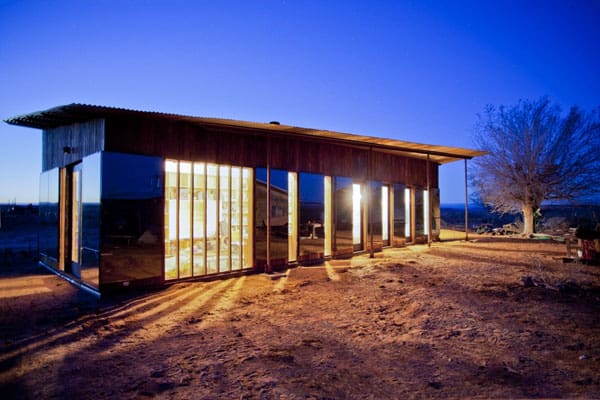
Nakai House is a cabin designed and built by eight architecture students from the University of Colorado in the southwestern Utah desert for for poet, farmer and entomologist Lorraine Nakai. The design of Nakai House was inspired in equal measures by her love of the land and literature. Under the guidance of tutor Rick Sommerfeld, the students teamed up with charity DesignBuildBLUFF, who regularly work with students to provide housing for some of the 2.4 million Native Americans that live in dilapidated or overcrowded housing on tribal land. The 745 square foot home set in the Navajo Nation was completed in an impressive 180 days for with the use of recycled materials at a cost of only $25,000!
A study in efficiency in both energy use and space, the home is defined by a 50’-long bookshelf that allows Lorraine to show off her large, eclectic book collection while separating an open space for working and entertaining visitors from Lorraine’s more private living spaces. The public zone of the floor plan constitutes an open space subtly layered to provide three zones of privacy. A ribbon window next to the kitchen table frames the nearby Cedar Mesa perfectly, while a window seat projects outward beneath the shade of a tree, providing Lorraine with many places to read, write and be inspired. The fireplace, an integral part of the Navajo Culture, further denotes the transition from the public to the private.
The team were tasked with replacing the home of Lorraine Nakai, an avid collector of books, ornaments and other memorabilia. “When we met her, she had her collections piled and dispersed within her old house. She expressed a strong desire to be able to showcase her eclectic collections in her new home – they were truly a part of who she was,” explains the team.
Rather than a conventional bedroom, Lorraine’s bedroom is merely a sleeping nook nestled within the bookshelf. For her guests, a lofted sleeping space above the library can be accessed by climbing a hand constructed ladder. The ‘stepping’ floor plan provides panoramic views of the northern mountains, while the western splash window frames views of the desert landscape.
The house was sited perpendicular to the three existing buildings to create a communal courtyard. Opening to the south, this exterior courtyard provides cool breezes in the summer while shielding the harsh western winds of the winter. In response to the geomorphology of the site, the roof gestures up to a lone tree on the northeast and the nearby hill to the southwest. A parabolic roof that seems to move with the wind and the surrounding dunes rises above a rainscreen made from reclaimed spandrel glass that reflects the desert landscape. Vertical tongue and groove cedar wraps the house above the band of glass and abuts to the knife edge overhang of the corten steel roof.

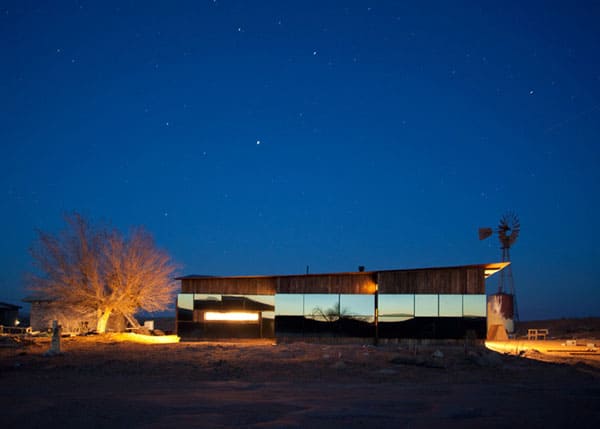

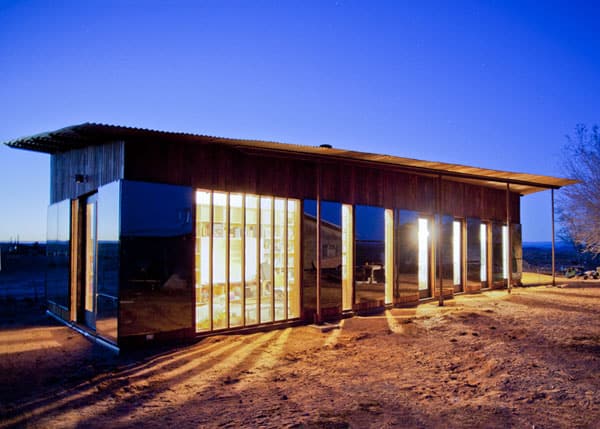
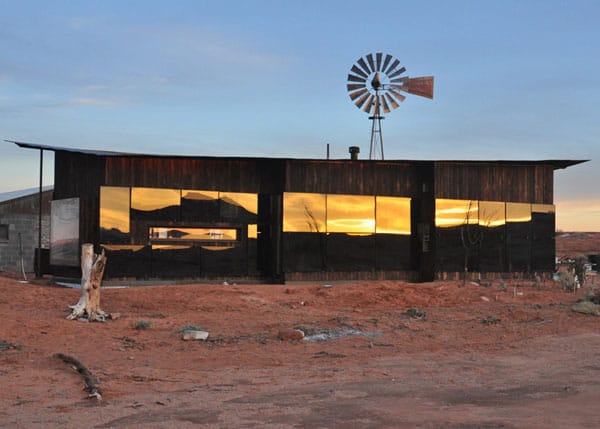
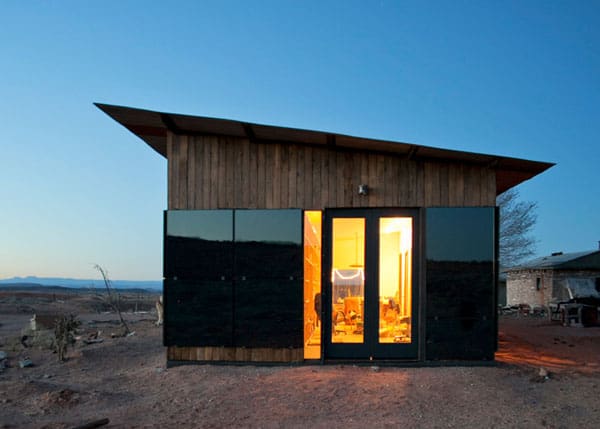
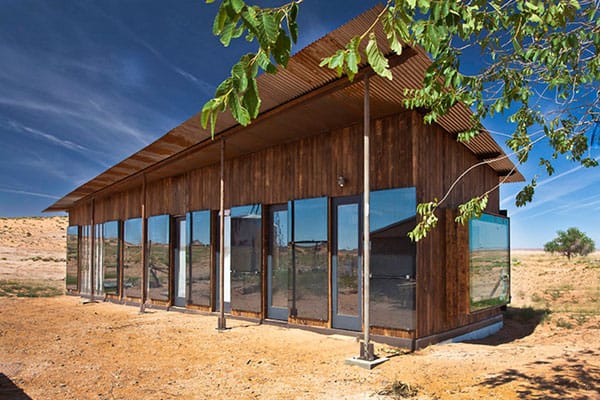

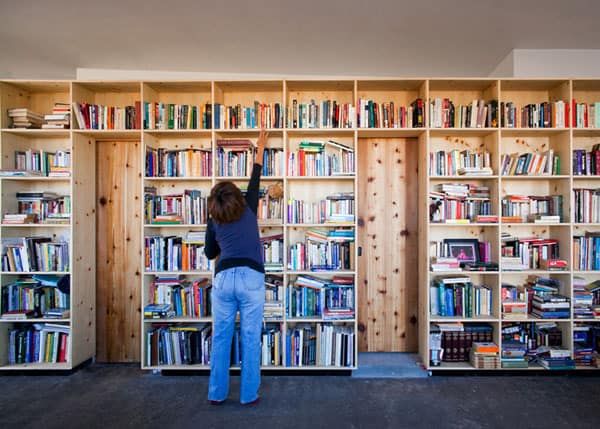
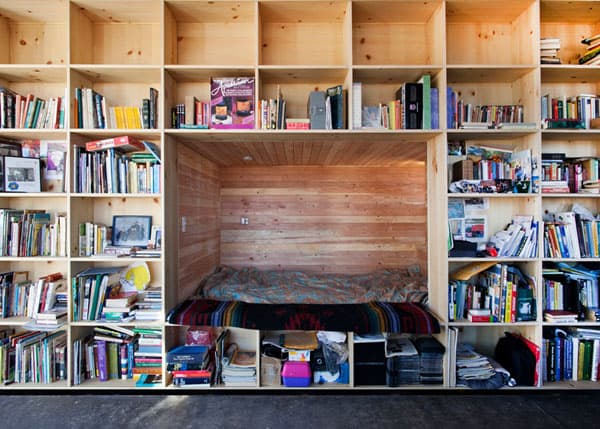

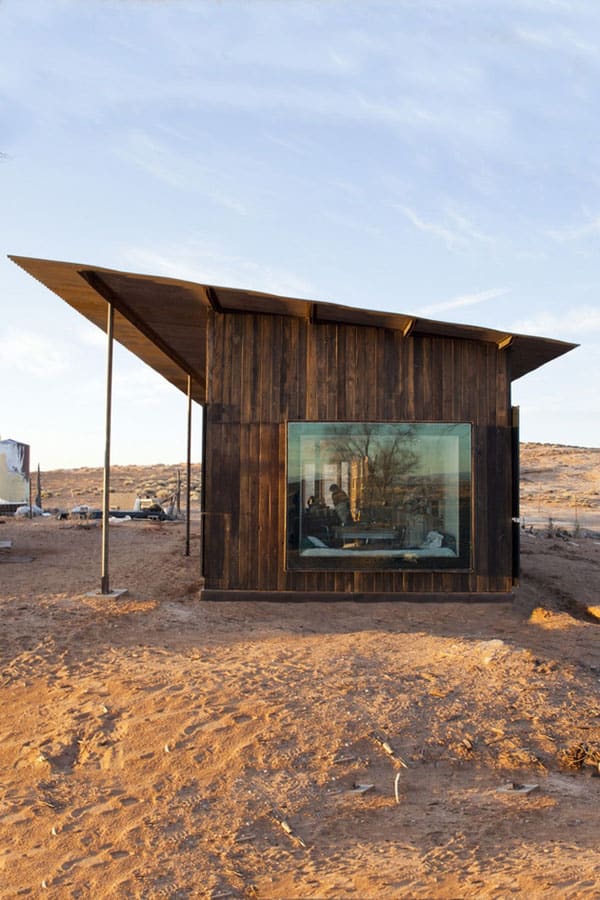
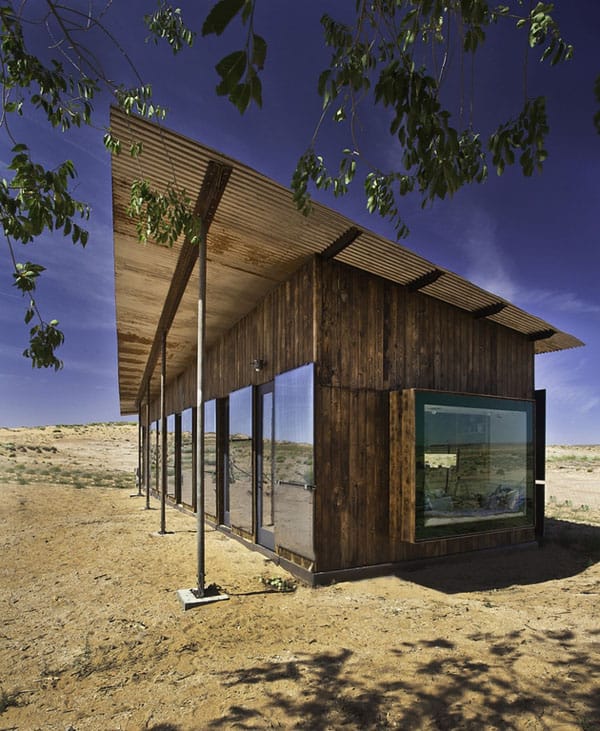

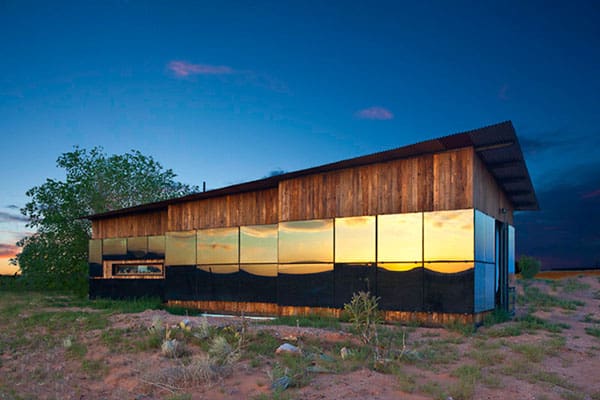
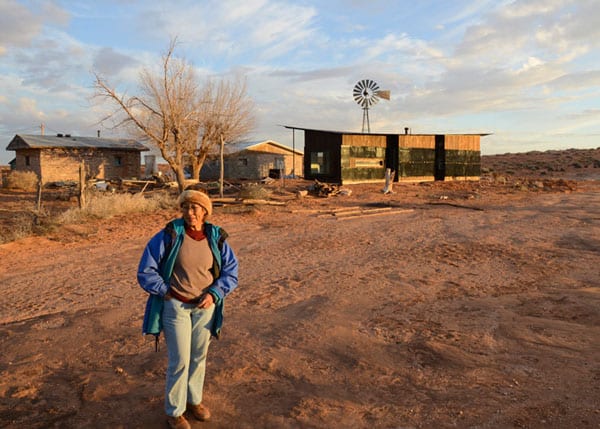
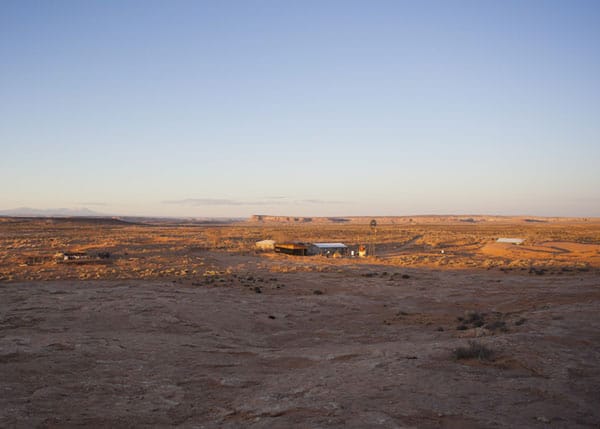
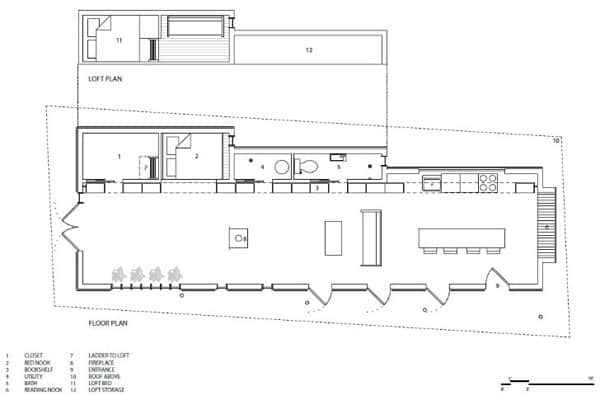

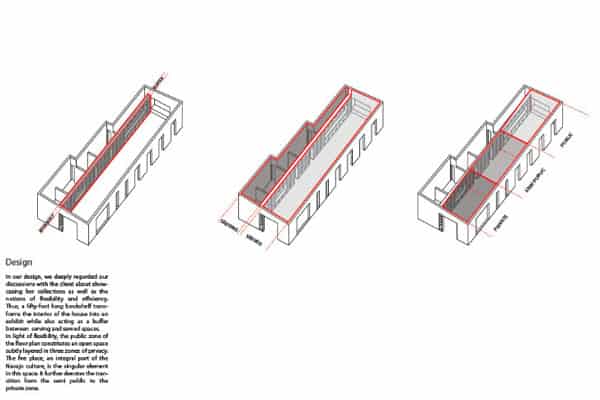
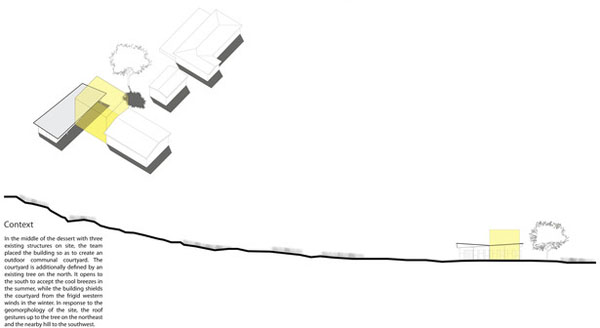
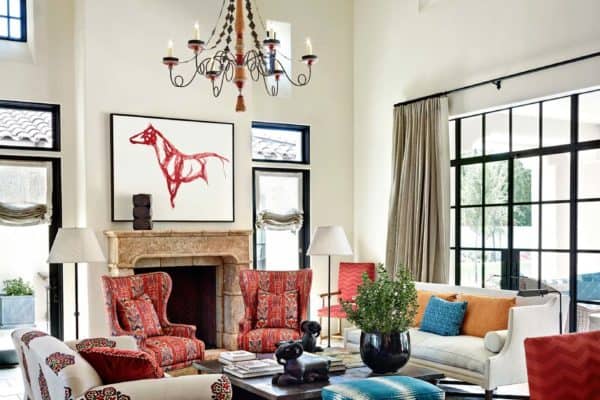

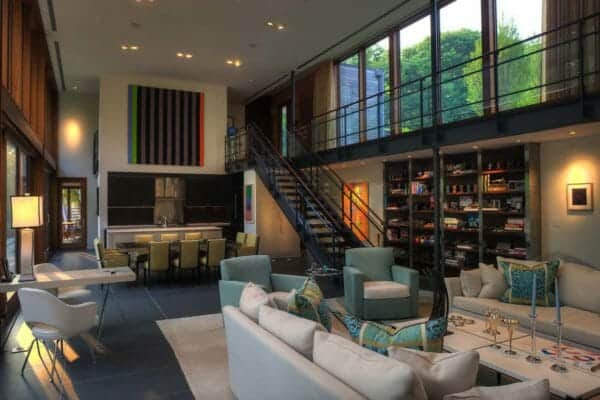
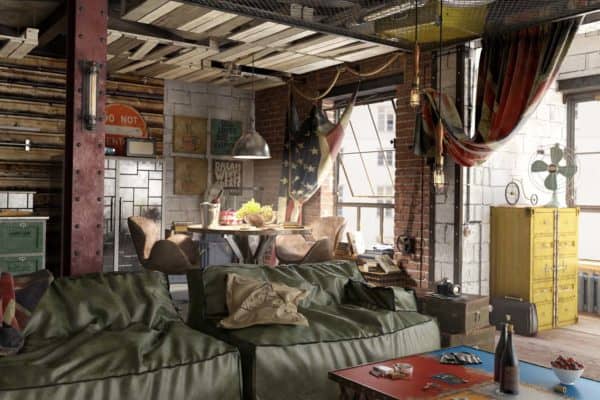
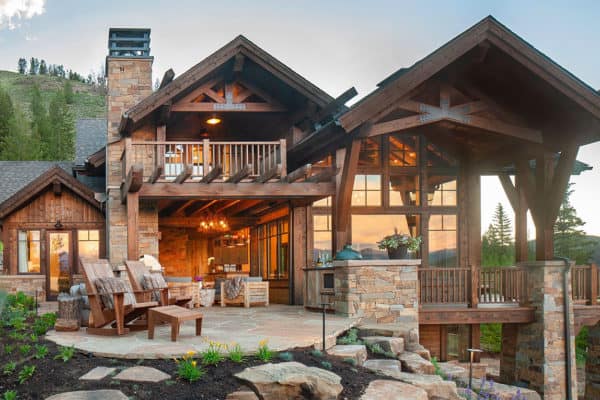

0 comments